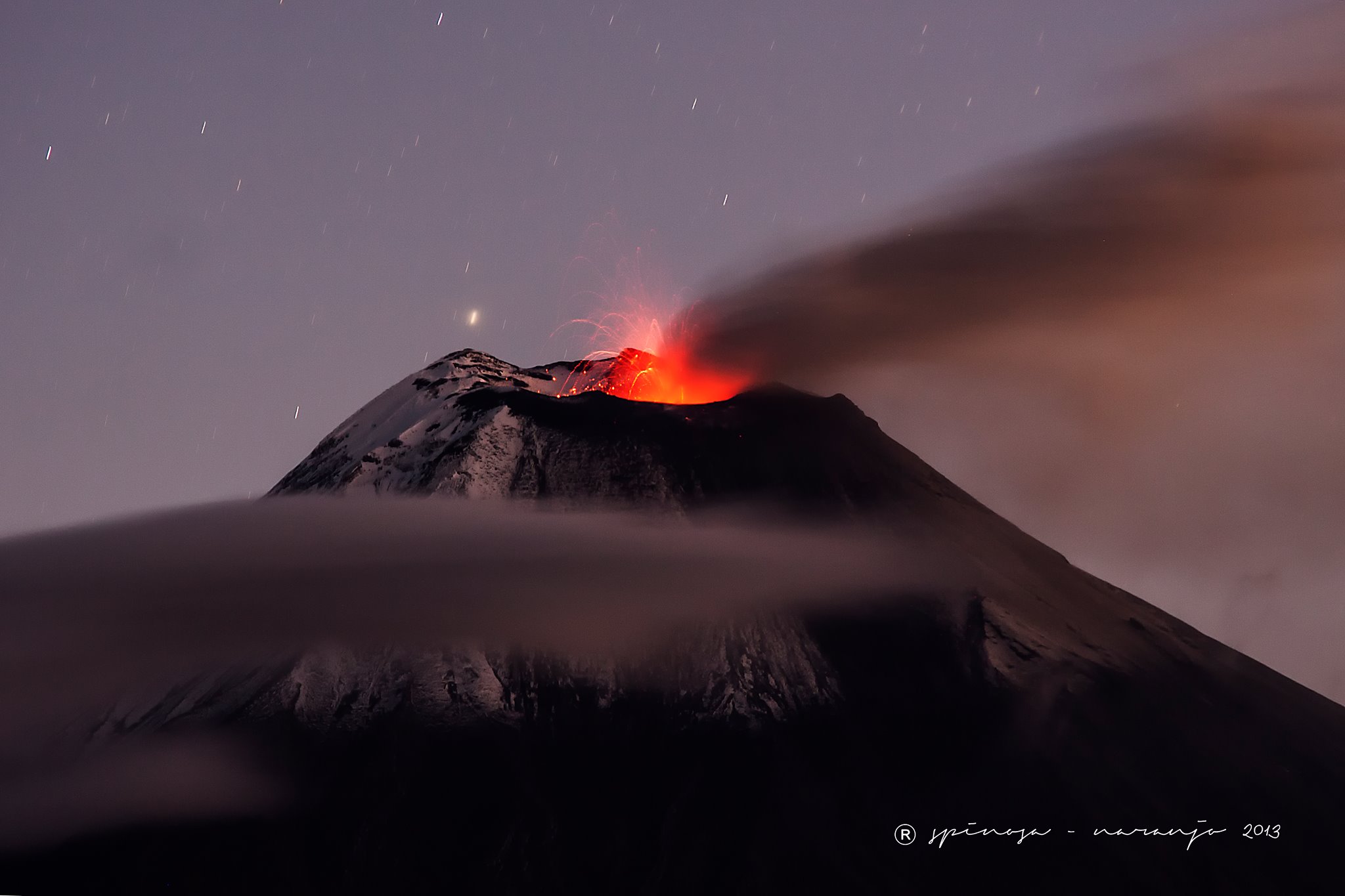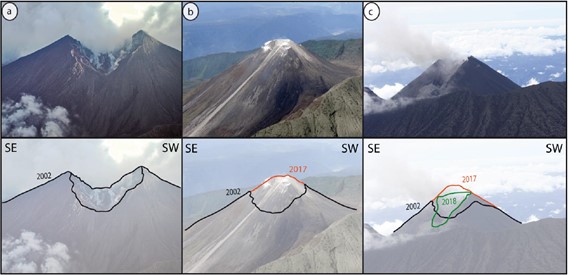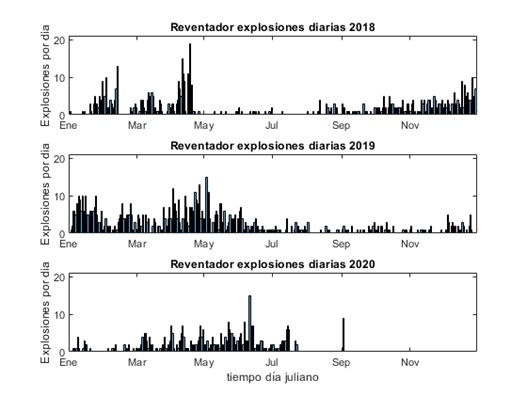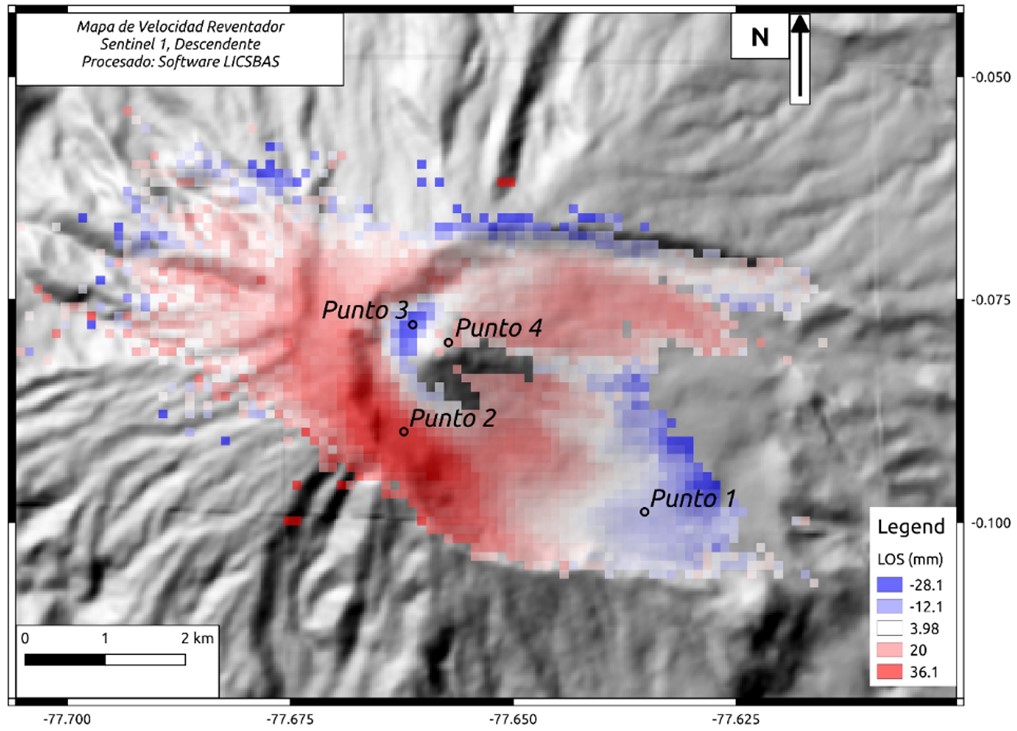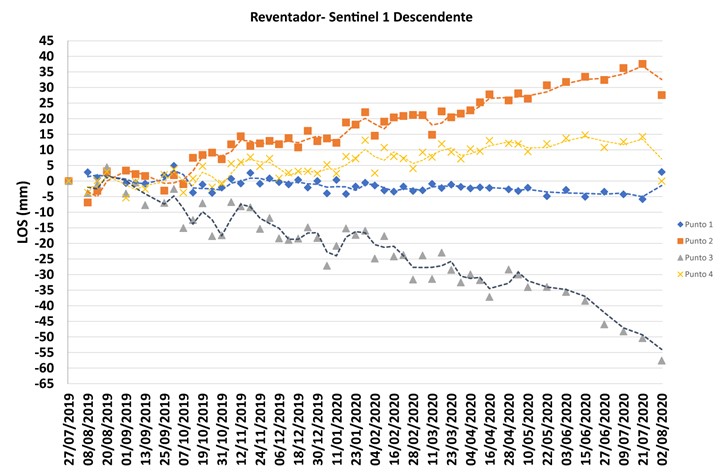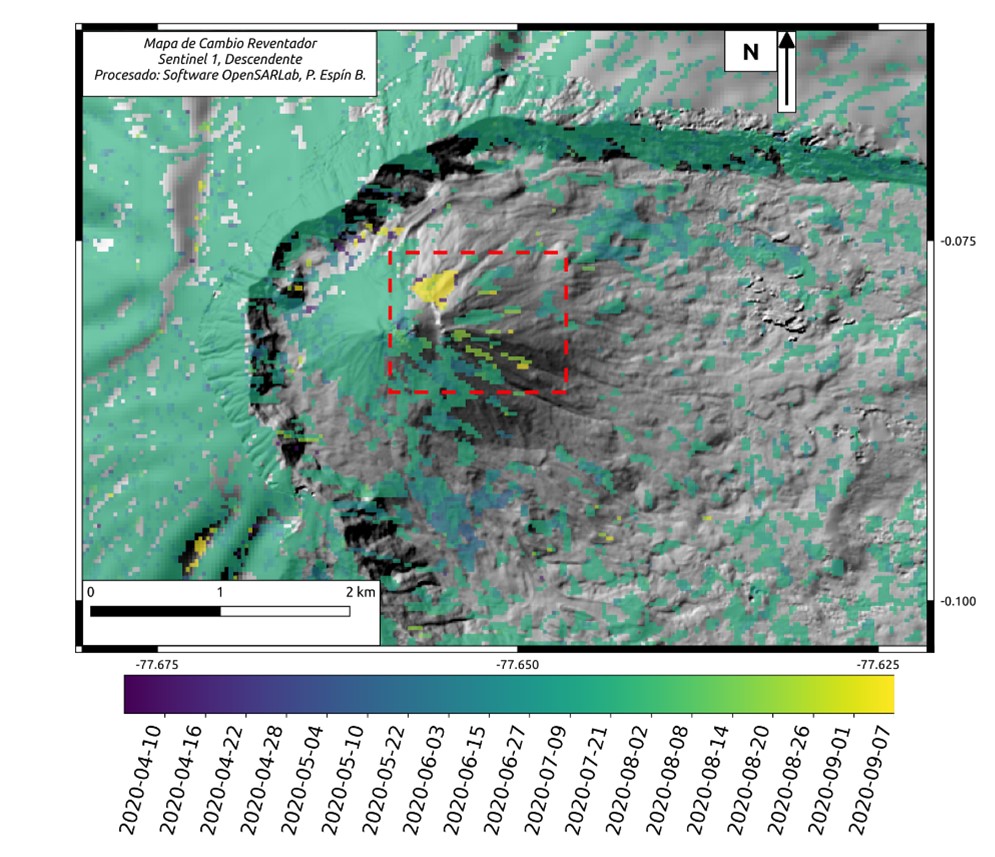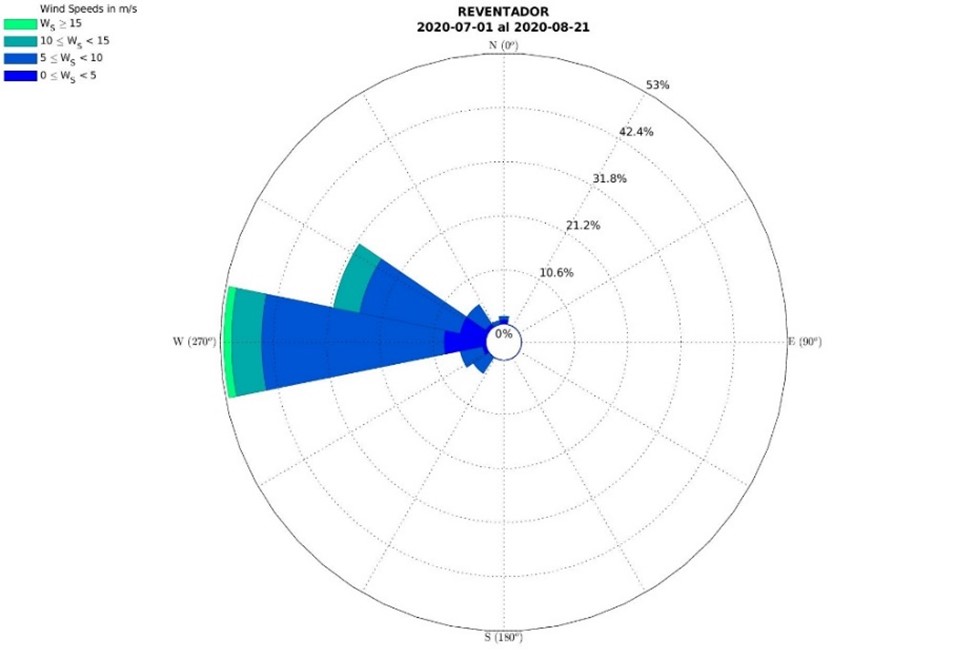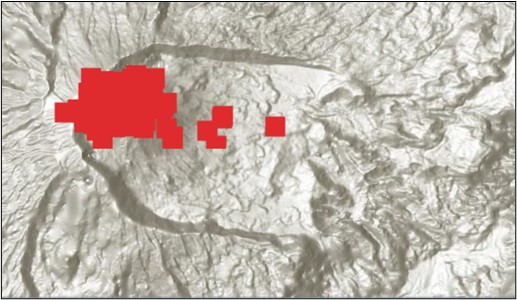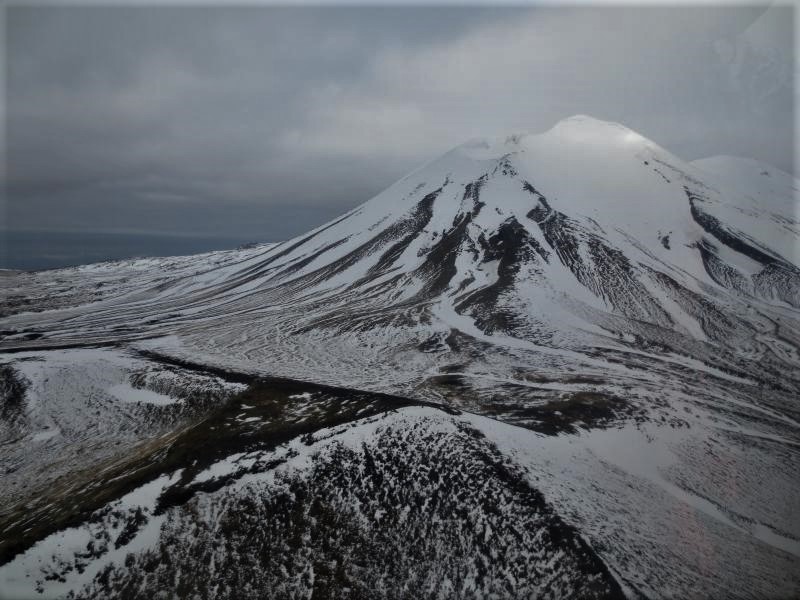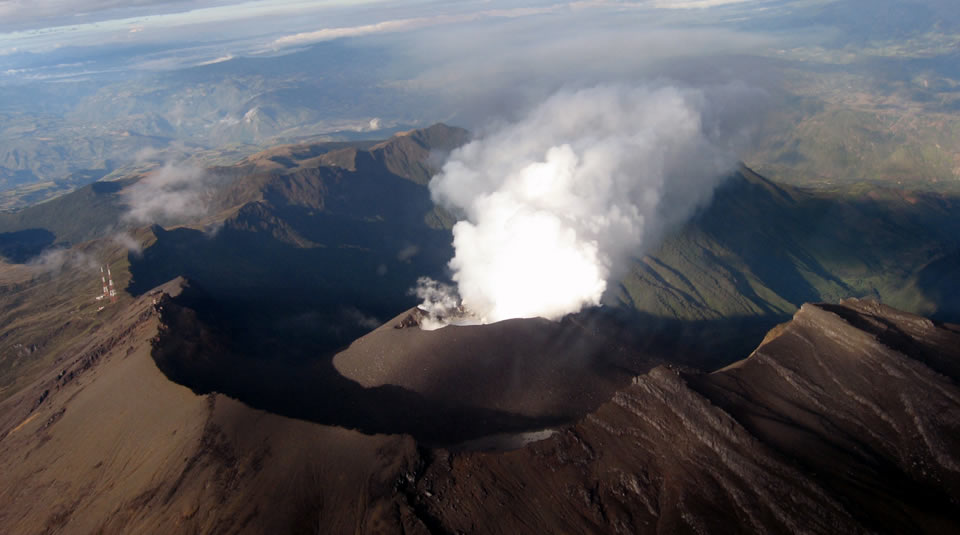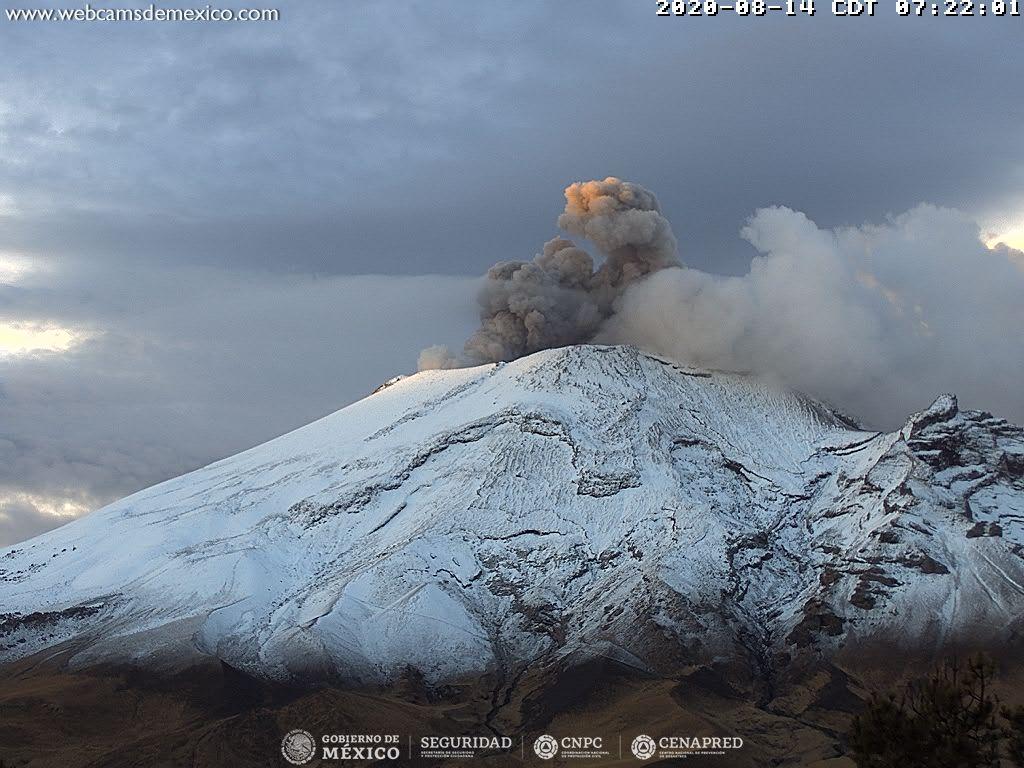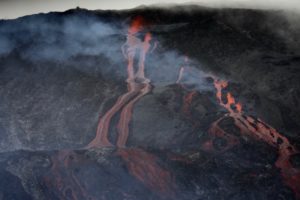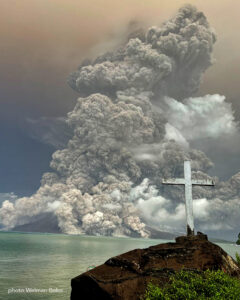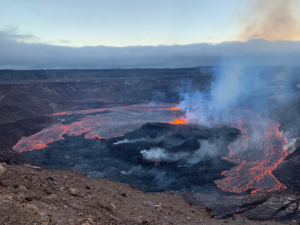September 13 , 2020.
Ecuador , Reventador :
SPECIAL REPORT ON THE REVENTADOR VOLCANO N ° 2-2020.
Update of eruptive activity
abstract
The El Reventador volcano has been in an eruptive process since November 2002. Since the end of June of this year, it has shown a slight increase in its surface activity. This increase is linked to the presence of a lava dome at the top, a new lava flow 400 meters long on the northeast flank and the appearance of small pyroclastic flows (<1 km range). All these phenomena are limited to the vicinity of the young cone. In addition, the appearance of ash and gas emission columns has been persistent throughout these years. The most significant changes have taken place since August with the emission of lava flow and the appearance of domes at the top. These could increase the probability of larger explosions, which could partially or totally destroy the dome and therefore generate taller ash emission columns and the appearance of larger pyroclastic flows. The EPN Institute of Geophysics remains attentive to any changes that occur in the eruptive dynamics of the El Reventador volcano and will promptly alert the community and the authorities.
Antecedents
The Reventador is located approximately 90 kilometers (km) east of the city of Quito and currently attached to the Sangay, volcanoes which are erupting in Ecuador. El Reventador is a stratovolcano whose summit reaches 3600 meters above sea level. Its paroxysmal eruption of November 3, 2002 is considered the largest eruption in Ecuadorian territory of the last century, classified as subpline with a volcanic explosive index (VEI) of 4 [Hall et al., 2004]. During this eruption, much of the summit was destroyed, reducing its height by almost 100 meters and creating a large crater about 480 meters in diameter. After the paroxysmal eruption, the behavior of the volcano was variable, with effusive eruptions with the emission of several lava flows and domes and more explosive eruptions with the generation of eruptive columns and pyroclastic flows. The level of activity has also been variable throughout these years. Currently, the crater left by the 2002 eruption has been filled in and the cone has been completely rebuilt. The recent activity of the volcano since November 2016, has been generally high with an explosive regime, and this persisted until January 2017. During the month of May 2017, while the summit vents continued their explosive activity (approximately an explosion every hour), a new third vent has been identified producing lava flows on the northeast flank, about 70 meters below the summit. In June 2017, El Reventador experienced its highest level of activity in more than 10 years, characterized by the rapid effusion of the largest lava flow since 2008, which reached almost 3 km. Part of the north-west flank of the building collapsed in April 2018 (Fig. 1), again destroying a large part of the summit and forming a new large crater, open to the north-north-west. At least three new vents in the scar of the collapse shows how fast the changes are, resulting in an inherently unstable cone. As of the publication date of this report, the building has again been reconstructed to a similar or slightly higher height than before 2002.
Figure. 1. a) After an explosive event in 2002, part of the summit of El Reventador volcano was destroyed, as shown in this aerial photo. b) Since then the crater has been almost completely filled, as shown in this photo of the active cone in June 2017. c) This aerial photo shows the most recent collapse event, which occurred in April 2018. Photographs: a) P. Ramón, IG / EPN; b) Mr. Almeida, IG / EPN; c) S. Vallejo, IG / EPN. Extracted from: Almeida, M., H. E. Gaunt and P. Ramón (2019).
Technical-scientific annex.
Seismic-acoustic activity
The seismic-acoustic network of the El Reventador volcano has been in intermittent communication since July 19 of this year. This makes it impossible to directly quantify all the earthquakes that occur on the volcano. Figure 2 shows the number of moderate and large explosions recorded at the REVS station, located south of the volcanic cone, since 2018. Note that between August 30 and August 31, 2020, 10 hours of data were received since the REVS station (seismic and infrasound), in which the intense activity of the volcano could be observed. Figure 3 shows the seismicity recorded during the mentioned period, as well as a detail of one of the explosions of August 30, 2020.
Figure. 3. A: Seismogram of the REVS station from August 30 to 31, 2020, lasting twelve hours. B Infrasound recording from the same station. Circles indicate explosion at 3:40 PM TL. C: Detail of the explosion indicated in the three seismic components and in the infrasound recording. The delay of the seismic recording can be appreciated because it has a lower propagation speed.
Deformation
For the deformation analysis, the interferometric processing of Synthetic Aperture Radar (InSAR) images, acquired via Sentinel-1 from the European Space Agency (ESA), was carried out using LICSBAS software (Morishita et al., 2020). Figure 4 shows the speed map obtained in descending orbit from July 27, 2020 to August 2, 2020, with the SBAS (Small Baseline) method.
The zones represented in orange-red color record the movements of the sides of the volcano at a speed between 20 and 36.1 mm / year in satellite line of sight (LOS). This displacement is considered as a positive deformation called “inflation”, which is observed with greater intensity in the west southwest part of the volcano. While in the part closest to the western flank and the outer part of the flanks to the north and south-east (sky blue color), they present a negative deformation zone called « deflation » with speeds between 4 and 28, 1 mm / year.
In the central part of the map, shown in gray (DEM Digital Elevation Model), consistency is low due to recent volcanic materials, deposited in the area due to eruptive activity (pyroclastic flows and fall deposits). These new and changing deposits make it difficult to measure strain in this area.
Figure 4. Map of deformation speeds obtained by InSAR, based on Sentinel-1 images of the descending orbit of El Reventador volcano, between July 27, 2020 and August 2, 2020. Processing with LICSBAS software (Morishita et al. ., 2020), with the SBAS (Small Baseline) method. The points represent the place where the time series was obtained Fig. 5.
In the time series (Fig. 5), we observe that the deformation at points 2 and 4 (shown in Fig. 4) shows an inflation in the southwest area (Point 2) of 35 mm and in the upper part of the 15 mm volcano (Point 4, low coherence) which started in April. Meanwhile, on the western flank (point 3), the lower part of the volcano, we observe a negative “constant deflationary” deformation, which could correspond to the deformation of the volcanic system of about 55 mm. Finally, in the area furthest from the volcano (Point 1, Southeast), a slightly deflationary deformation of 5 mm is observed, which would be linked to the zone of deposition of recent lava flows in the compaction process.
Figure 5. Satellite line-of-sight (LOS) displacement time series obtained from Sentinel-1 descending orbit images between July 27, 2020 and August 2, 2020 for the flanks. The points are located in Figure 1. (Blue, Point 1; lat, lon: -77.63528, -0.09883, Orange Point 2; lat, lon: -77.66228, -0.08983, Gray Point 3, lat, lon: -77.66128, -0.07783, yellow point 4: lat, lon: -77.65728, -0.07983).
Amplitude image analysis:
For the analysis of morphological changes, synthetic aperture radar (SAR) image processing was performed, with Sentinel-1 images from the European Space Agency (ESA), using OpenSARLab software. (University of Alaska Fairbanks, Earth Big Data, LLC).
Figure 6 corresponds to a change map obtained from processing the amplitude (quantity of energy captured by the satellite on the morphology) of Sentinel-1 images in descending orbit from April 10 to September 7, 2020. Yellow in color more intense, they correspond to the morphological changes observed by the satellite between September 1 and 7, 2020, which would correspond to the northeast zone of the volcanic cone and the southeast part (red box).
The changes observed on the surface interpreted through the analysis of the amplitude, may correspond in the northeastern part to the lava flow generated in recent weeks. The eastern, south-eastern part would correspond to a potential subsidence mainly associated with areas where there is an accumulation of lava flows emitted throughout the previous eruptive periods, similar to what was observed between 2002-2009 (Naranjo et al. ., 2016).
Figure 6. Change map obtained from Sentinel-1 amplitude images in descending orbit between April 10 and September 7, 2020 with OpenSARLab software.
Surface activity.
1. Ash emissions
From July 1 to August 21, a total of 132 alerts were recorded in the Ash Column Alert Database (Source: Washington VAAC – USGS), the same ones reaching heights of 705m to 1315m. In general, heights remained at an average of 975 meters above sea level and were constant throughout the period of activity. The heights of the eruptive columns during this period were those generally observed during the last years of the volcano eruption (Fig. 7).
The predominant wind direction was west (Fig. 7). The wind speed was between 3.8 m / s and 16.7 m / s with an average of 7.4 m / s (Fig. 7). In addition, the maximum range of the columns was 86 km on August 13, generally the ranges were less than 60 km, maintaining an average of 30 km during this period.
Figure 7. Above: Heights of the ash columns corresponding to the period between July 1 and August 21, 2020, we can see that most of the heights are close to 1000 m altitude. Below: Wind direction and speed, we can underline that the predominant direction of the winds during this period was towards the West, (Source: Washington VAAC, M Encalada – IGEPN).
It should be mentioned that this type of alerts viewed by satellite depends a lot on the weather, that is to say that if the day is cloudy it is not possible to detect an alert unless the height of the column exceeds that of the clouds.
2. Thermal alerts by satellite.
Satellite monitoring of thermal alerts is a useful tool for observing the activity of the volcano mainly due to its remoteness. In figure 8, you can see the number of alerts recorded for the El Reventador volcano for the period from January 2019 to September 2020 using the VIIRS and MODIS sensors. In general, we see that the number of alerts in August is one of the highest this year, with a monthly rate of nearly 3 alerts per day (red and black lines). This number is in agreement with the information generated by other surveillance techniques, which confirms an increase in El Reventador’s activity without it becoming greater than that recorded in previous years.
Figure 8. Thermal alerts recorded from January 2019 to August 2020 with the VIIRS and MODIS sensors. The monthly average daily rate corresponds to the number of alerts per day during the month. (Source: VIIRS and MODIS sensors, FJ Vásconez – IGEPN).
Likewise, the location of the thermal alerts detected by the FIRMS system during the last 30 days shows that they are located mainly in the vicinity of the conical crater and very probably associated with the emission of a lava flow and the generation of a dome in the crater, in addition to the products of explosive activity (Fig. 9).
Figure 9. Location of thermal alerts detected by the FIRMS system in the Reventador volcano during the last thirty days.
3. Surface observations
Since the beginning of this year, the activity of the volcano has been variable. Superficially, it was possible to observe explosions, columns of gas with variable ash content, the rolling of blocks on the sides of the volcano, the expulsion of ballistic blocks, the generation of pyroclastic flows, a lava flow and a lava dome (Fig. ten). These volcanic products were identified on the basis of the analysis of photographs and infrared (IR) images from cameras located to the Southeast and Northeast of the volcanic building.
• Between January and the end of March, the activity of the volcano was characterized by being slightly high with the generation of explosions, and the presence of rolling blocks and projections of ballistic blocks on the flanks of the volcano.
• Between April and early June, the presence of gas / vapor and ash emissions was observed, with explosions-type signals but not strong enough to expel pyroclasts of considerable size towards the flanks of the volcano.
• Between approximately the second week of June and the end of August, an increase in the surface activity of the volcano was noted. This was linked to the presence of strong explosions which triggered the expulsion of blocks which rolled on the sides of the volcano or which were ejected and took a projectile trajectory. In addition, the presence of pyroclastic flows was observed towards the northern, northeastern and western flanks of the volcanic cone.
• In addition, at the beginning of August, we observed the generation of a small lava flow which descends from the summit towards the northeast flank, which so far has not exceeded 500 m in length. Finally, for August 17, we observe the formation of a lava dome at the summit.
Figure 10. Synthesis of infrared images showing the different volcanic products generated on the volcano in August 2020, which are linked to the presence of gas and ash emission columns, lava flows, the lava dome and pyroclastic flows. (Source: Cámar IR, S Vallejo – IGEPN).
Conclusions.
Since the end of June 2020, the eruptive activity of the El Reventador volcano has shown a slight increase, the same which has been accentuated since the beginning of August. This increase is linked to the presence of a dome at the top of the volcano and a small lava flow in the northeast, in addition to the appearance of small pyroclastic flows that descend the sides of the volcano. The growth of this lava dome increases the possibility of larger explosions that could partially or totally destroy the dome and form larger-scale pyroclastic flows that could affect nearby infrastructure (e.g. pipelines, roads, buildings).
It is necessary to restore as quickly as possible the transmission to IG Quito of the signals from the seismic and infrasound stations, which allow better monitoring of the Reventador volcano. These stations are only accessible by helicopter. Without these signals, it is impossible to make a reliable estimate of the levels of internal activity that the volcano currently exhibits, as well as to issue early warnings in the event of a descent of volcanic flows through the Marker and Reventador rivers.
General recommendations
Do not approach the danger zones of the El Reventador volcano. Stay informed of the evolution of eruptive activity on the site of the Geophysical Institute and on its social networks Twitter, Facebook. Follow the recommendations of the risk management authorities (SNGRE and GAD).
Source : IGEPN.
Read the article: https://www.igepn.edu.ec/servicios/noticias/1831-informe-especial-del-volcan-el-reventador-n-2-2020
Photo :José Luis Espinosa Naranjo .
Alaska , Semisopochnoi :
51°55’44 » N 179°35’52 » E,
Summit Elevation 2625 ft (800 m)
Current Volcano Alert Level: ADVISORY
Current Aviation Color Code: YELLOW
Several earthquakes were detected over the past day. Seismic data transmission has been temporarily interrupted due to network connectivity issues. Uncertain when these will be resolved. Nothing noteworthy observed in satellite imagery over the past day and AVO has received no reports of unrest or unusual activity at Semisopochnoi from passing pilots.
Semisopochnoi is monitored by local seismic sensors, satellite data, and regional infrasound and lightning detection instruments. An infrasound array on Adak Island may detect explosive emissions from Semisopochnoi with a slight delay (approximately 13 minutes) if atmospheric conditions permit.
Source : AVO .
Photo : Kaufman max.
Colombia , Galeras :
Weekly activity bulletin of the Galeras volcano
Volcanic activity continues at YELLOW LEVEL ■ (III): CHANGES IN THE BEHAVIOR OF VOLCANIC ACTIVITY.
From the monitoring of the activity of VOLCAN GALERAS, the COLOMBIAN GEOLOGICAL SERVICE (SGC) reports that:
In low levels, for the period September 1-7, 2020, there was a slight decrease in the seismic occurrence, associated with an increase in the energy released. The predominance of the seismicity associated with the fracture of the cortical material was maintained, allowing the localization of 9 VT-type events, which were located in a dispersed manner in various sectors of the volcanic complex, at distances of up to 15 km from the active cone. , with depths less than 17 km from the summit (reference level greater than 4200 m altitude) and a maximum local magnitude of 1.5 on the Richter scale.
Throughout the week it was possible to record gas emissions from the main crater and the fumarole fields on the outskirts of the active cone, El Paisita to the North and Las Chavas to the West, with white columns, of low height and direction of variable dispersion under the action of the winds.
No significant change was observed in other monitoring parameters.
The COLOMBIAN GEOLOGICAL SERVICE remains attentive to the evolution of the volcanic phenomenon and will continue to report the observed changes in due course.
Source : SGC.
Photo : Ingeominas .
Mexico , Popocatepetl :
September 11, 11:00 a.m. (September 11, 4:00 p.m. GMT)
Over the past 24 hours, the Popocatépetl volcano monitoring system has identified 152 exhalations accompanied by volcanic gases and sometimes slight amounts of ash. In addition, 103 minutes of tremor were recorded.
As of today morning and at the time of this report, it has not been possible to see the crater of the volcano continuously, however it was partially observed with an emission of water vapor and gas in a north-east direction.
CENAPRED urges NOT TO APPROACH the volcano and in particular the crater, because of the danger posed by the fall of ballistic fragments and, in the event of heavy rains, to stay away from the bottom of the ravines because of the danger of flows mud and debris.
The Popocatépetl volcanic alert semaphore is in YELLOW PHASE 2.
Source : Cenapred .
Photo : Archive webcamdemexico

